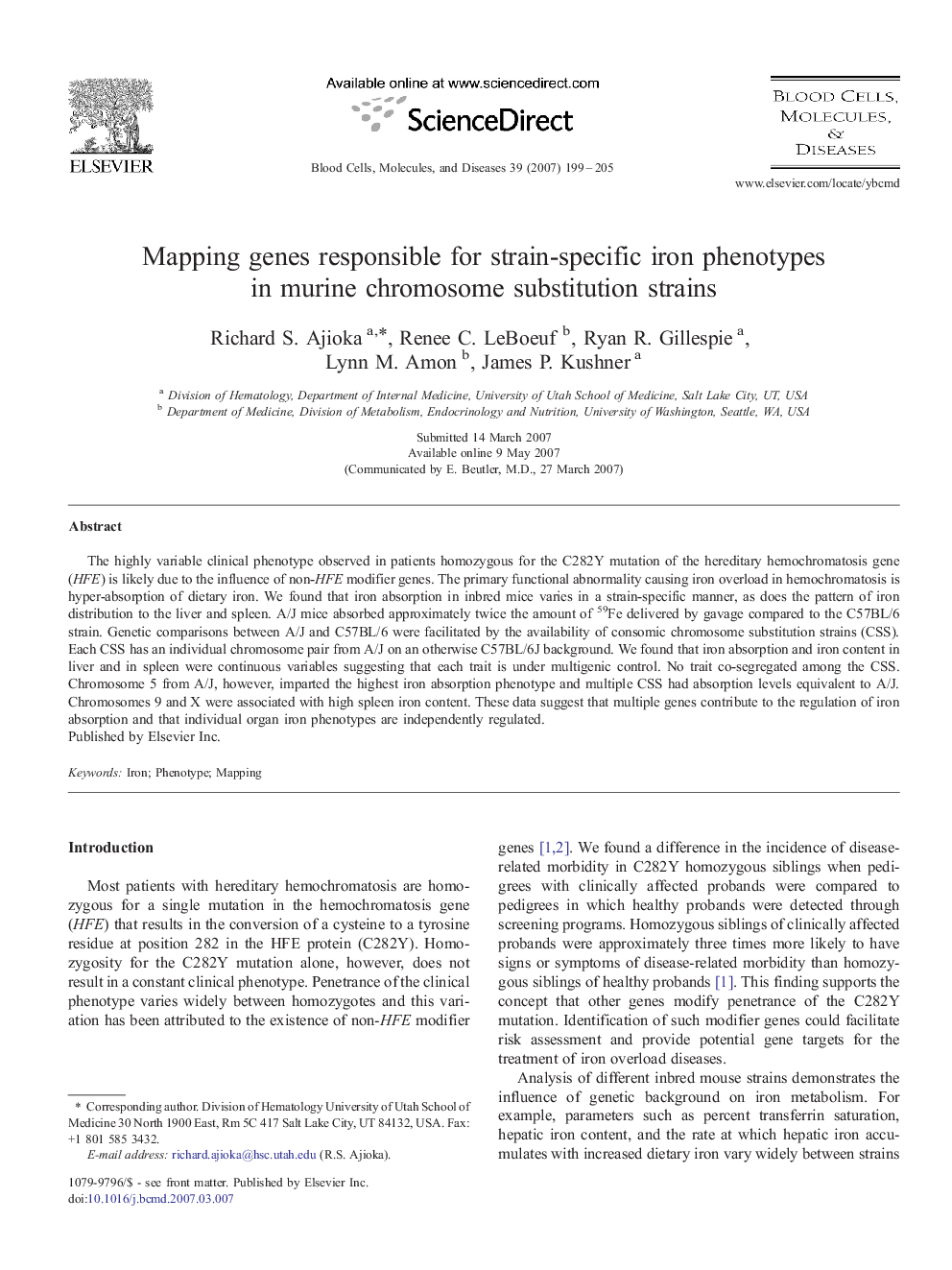| Article ID | Journal | Published Year | Pages | File Type |
|---|---|---|---|---|
| 2828116 | Blood Cells, Molecules, and Diseases | 2007 | 7 Pages |
Abstract
The highly variable clinical phenotype observed in patients homozygous for the C282Y mutation of the hereditary hemochromatosis gene (HFE) is likely due to the influence of non-HFE modifier genes. The primary functional abnormality causing iron overload in hemochromatosis is hyper-absorption of dietary iron. We found that iron absorption in inbred mice varies in a strain-specific manner, as does the pattern of iron distribution to the liver and spleen. A/J mice absorbed approximately twice the amount of 59Fe delivered by gavage compared to the C57BL/6 strain. Genetic comparisons between A/J and C57BL/6 were facilitated by the availability of consomic chromosome substitution strains (CSS). Each CSS has an individual chromosome pair from A/J on an otherwise C57BL/6J background. We found that iron absorption and iron content in liver and in spleen were continuous variables suggesting that each trait is under multigenic control. No trait co-segregated among the CSS. Chromosome 5 from A/J, however, imparted the highest iron absorption phenotype and multiple CSS had absorption levels equivalent to A/J. Chromosomes 9 and X were associated with high spleen iron content. These data suggest that multiple genes contribute to the regulation of iron absorption and that individual organ iron phenotypes are independently regulated.
Related Topics
Life Sciences
Biochemistry, Genetics and Molecular Biology
Molecular Biology
Authors
Richard S. Ajioka, Renee C. LeBoeuf, Ryan R. Gillespie, Lynn M. Amon, James P. Kushner,
